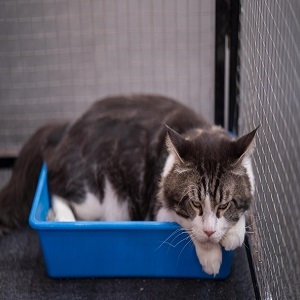7 Functions of a Cat Shelter: Providing Sanctuary and Shaping LivesPosted by Maverick Lewis on June 28th, 2024  Cat shelters play a vital role in the well-being of feline communities worldwide. Far from just being a place to house homeless cats, shelters fulfill many functions, acting as lifelines, advocates, and educators all rolled into one. Let's delve into the seven critical tasks that make a cat shelter in California essential for a compassionate community: 1. Rescue & Intake: A Safe Haven for Vulnerable FelinesThe journey for a kitty in need often starts with the shelter. They may be strays found wandering the streets, abandoned by their owners, or surrendered due to various circumstances. A cat shelter provides a haven, a place of refuge from the dangers of the outside world. Upon arrival, cats undergo a thorough assessment, with veterinary care addressing immediate medical needs. Vaccinations, deworming, flea and tick treatments are administered, ensuring the overall health of the feline residents. 2. Medical Care & Rehabilitation: Restoring Health and HappinessIll or injured cats receive essential veterinary treatment at shelters. It can range from treating minor wounds to addressing more complex medical conditions. Cat shelter staff work closely with veterinarians to ensure proper care and recovery. Some shelters may even go the extra mile, providing specialized care for cats with chronic health issues or disabilities. By prioritizing health and recovery, shelters give cats a fighting chance for a happy and healthy life. 3. Fostering: A Bridge to Forever HomesShelters are often brimming with felines, and creating a home-like atmosphere for each cat is crucial. It is where foster families step in, acting as temporary caregivers. Foster homes provide a loving and nurturing environment for cats to adjust to the cat shelter setting. They receive individual attention, socialize with humans and other cats, and learn to flourish in a domestic environment. Fostering is vital in helping shy cats gain confidence and kittens develop healthy social skills. The senior cats experience the comfort of human companionship. It also allows potential adopters to witness a cat's true personality in a home environment. Thus, leading to more informed adoption decisions. 4. Adoption: Finding Furever FamiliesThe ultimate goal of any cat shelter is to find loving forever homes for their feline residents. Shelters take cautious steps to ensure successful adoptions.
5. Education & Community Outreach: Building a Cat-Friendly WorldShelters are not just about housing cats; they are also advocates for feline welfare. They raise awareness about responsible pet ownership, the importance of spaying/neutering to control cat populations, and the benefits of cat companionship. Educational resources on cat care, behavior modification, and identifying signs of illness are often available on shelter websites or through outreach programs. Shelters may also conduct workshops and talks and participate in community events to educate the public and promote responsible pet ownership. 6. Advocacy & Legislation: A Voice for the VoicelessMany cat shelters actively lobby for cat-friendly legislation. They advocate for better treatment of strays, stricter animal cruelty laws, and funding for spay/neuter programs. Their voices and the stories of rescued cats help raise public consciousness about the plight of homeless felines and the significance of feline welfare. A cat shelter may collaborate with animal control agencies to address feral cat colonies and overpopulation through humane solutions like trap-neuter-return programs. 7. Community Collaboration & Resource Sharing:Cat shelters rarely operate in isolation. They collaborate with other shelters, animal welfare organizations, and veterinary clinics to share resources, expertise, and best practices. This collaboration fosters a strong network dedicated to supporting feline well-being. Additionally, they may partner with local businesses to collect donations or conduct fundraising events. This spirit of collaboration ensures that resources are maximized and ultimately benefit more needy cats. Conclusion:A top cat shelter in California like Love A Meow is more than just a brick-and-mortar facility. They are sanctuaries for vulnerable cats, their well-being advocates, and educators promoting responsible pet ownership. They play a crucial role in creating a more compassionate and cat-friendly world. By supporting shelters through volunteering, donations, or fostering, we can all contribute to the seven lives of a cat shelter: rescue, care, rehabilitation, fostering, adoption, education, and advocacy. Let's work together to ensure every cat can have a purrfect future. Like it? Share it!More by this author |


